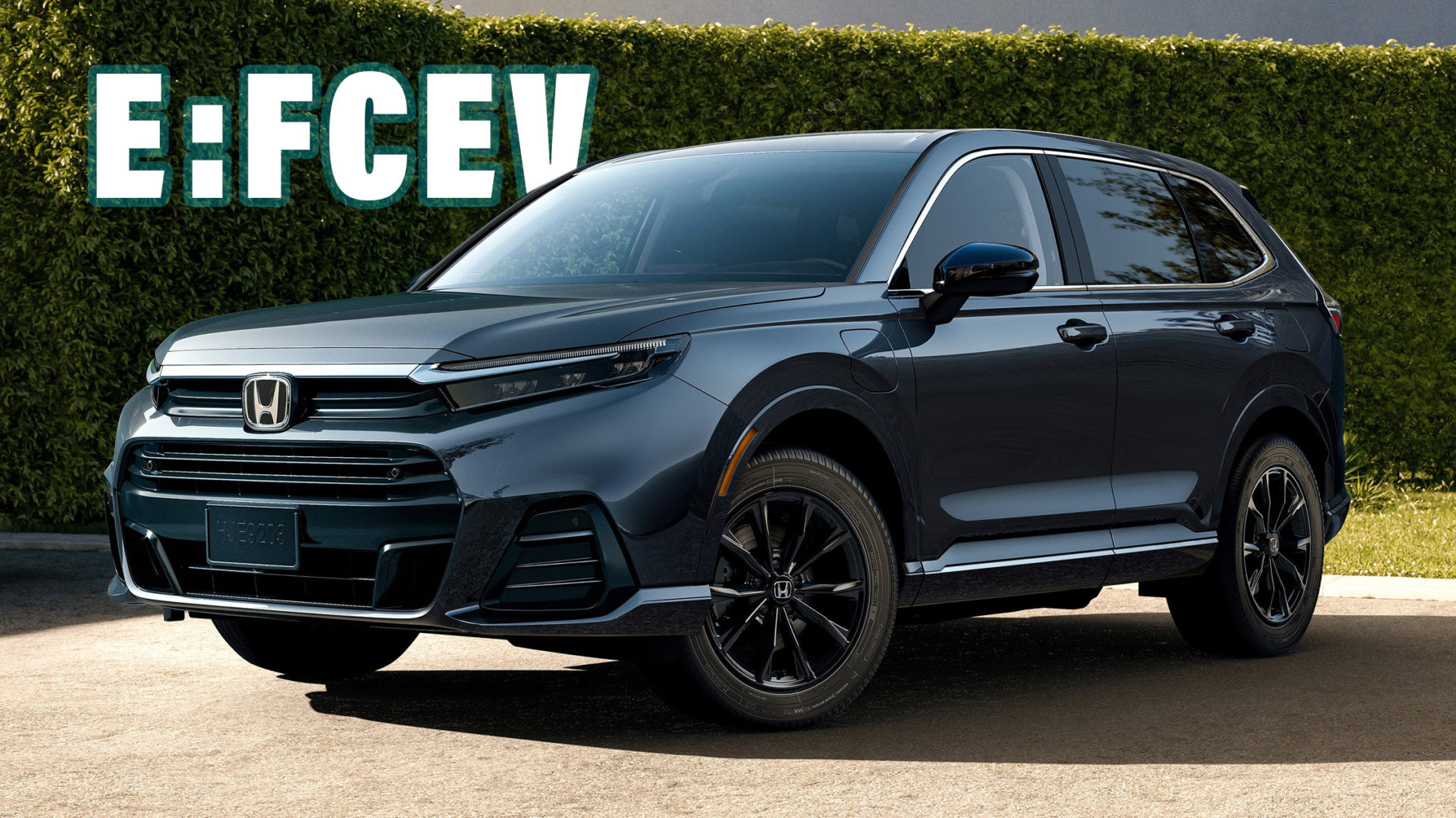The first hydrogen fuel cell consumer vehicle for America was announced on February 2024, by Honda.
With a name that doesn’t quite roll off the tongue, the CR-V e:FCEV combines a hydrogen fuel cell system with plug-in charging capability and has an EPA driving range rating of 270 miles.
Honda stated the vehicles will be available for customer leasing in California starting later this year and expects initial sales of 2,000 units annually.
Co-developed with General Motors, Honda said the CR-V e:FCEV’s new fuel cell system, made in Michigan, offers improved durability, higher efficiency, and lower cost compared to Honda’s previous-generation fuel cell system.
The new vehicle, produced in Ohio, includes a 110-volt outlet that delivers 1,500 watts of juice for powering items such as small home appliances, portable air conditioners, power tools, and camping equipment.
“Plus, the cost of building out a hydrogen fueling infrastructure is much higher than installing EV charging points, and on a chemical/molecular level, hydrogen is challenging to store and distribute,” Sanchez told TechNewsWorld.
“The biggest hurdle remains fueling infrastructure,” he said. “This is also an issue with EVs, but the biggest difference is EV charging stations can be set up relatively quickly and at comparatively low cost compared to hydrogen, which requires much more expensive hardware and infrastructure.”
“The vehicles themselves have proven reliable for the most part,” he added. “Fueling infrastructure is hydrogen fuel cells’ biggest Achilles’ heel.”
Not a Mass Market Item
“Hydrogen-powered cars, whether fuel cell or combustion, have never caught on in the mainstream, especially in the U.S., largely due to challenges with the fueling infrastructure, which has had major issues in reliability and uptime,” Sanchez observed.
Markets aren’t driving adoption in other countries, either. “The Japanese OEMs’ interest in hydrogen has been largely driven by incentives and encouragement by the Japanese government,” Sanchez said.
“The CRV is likely best seen as a demonstration that the tech works and to work out any kinks in the fuel cell and related ecosystem before much more expensive platforms are asked to use it. A hydrogen-powered FCEV [fuel cell electric vehicle] heavy truck will cost upwards of $800,000 before subsidies,” added Robin Gaster, a non-resident senior fellow at the Information Technology & Innovation Foundation, a research and public policy organization in Washington, D.C.
“Initial sales at 2,000 don’t suggest any intention to make this a mass-market product, even if this is only the first-year target,” he told TechNewsWorld.
John noted that battery electric cars are deployed in much larger numbers and are already becoming widely accepted. He pointed out that in 2023, over 9.6 million battery electric cars were sold across China, Europe, and the U.S., 32% more than the previous year. In comparison, sales of fuel cell cars were only around 8,500 globally, nearly half of the year before.
“Hydrogen-powered vehicle sales have collapsed in South Korea — two were sold in January — despite massive subsidies, and there is no traction in California either,” contended Gaster.
“Bluntly,” he continued, “BEVs have zoomed past hydrogen as the preferred clean power option for light vehicles. They will soon be out of sight, and manufacturers will switch to heavy vehicles, where hydrogen won’t win either, though the race is slightly closer.”
According to technewsworld.com. Source of photo: internet








